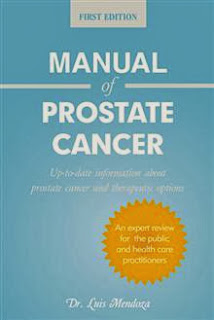High costs of cancer treatments can be an “undisclosed toxicity” that can harm a patient’s overall health and well-being, according to an article in The New England Journal of Medicine.1 High medical bills can not only cause stress and anxiety but may also compel patients to cut back on spending for other basic needs—such as food, leading to less healthy diets—or to take medications less frequently than prescribed.
“This is a very frequent cause of nonadherence,” the article’s lead author, Peter A. Ubel, MD, Professor of Business, Public Policy, and Medicine at Duke University, Durham, North Carolina, said in an interview with The ASCO Post. “It is a medical problem. Patients may not be showing up for tests or taking their pills because they can’t afford it. Dr. Ubel also tackled the issue of physicians rarely discussing medical intervention costs in an op-ed article he wrote for The New York Times.2
Not Always Easy to Know
“Because treatments can be ‘financially toxic,’ imposing out-of-pocket costs that may impair patients’ well-being, we contend that physicians need to disclose the financial consequences of treatment alternatives just as they inform patients about treatments’ side effects,” Dr. Ubel and colleagues wrote. They acknowledged that “it is very difficult, and often impossible for the clinician to know the actual out-of-pocket costs for each patient, since costs vary by intervention, insurer, location of care, choice of pharmacy or radiology service, and so on,” but added, “some general information is known.”
To those who say that they can’t disclose costs to patients because they themselves don’t know the prices, Dr. Ubel responds, “But you have an idea. For treatments you prescribe or use frequently, you have a pretty good idea. You know that some things are likely to cost your patients next to nothing and some things can cost a lot. That is a good starting point.”
While discussing costs of medical treatment would add time in an already tight schedule, Dr. Ubel challenged physicians to “think about how much time we spend trying to adjust medicines and revisit problems that we later found out occurred because patients were taking the pills every other day because they couldn’t afford them.” A recent study found that found 24% of cancer patients avoided filling prescriptions to save money, 19% partially filled prescriptions, and 20% took less than the prescribed amount of medication. In addition, 46% reduced the amount spent on food and clothing.3
Cheaper Alternatives
“Patients experience unnecessary financial distress when physicians do not inform them of alternative treatments that are less expensive but equally or nearly as effective,” Dr. Ubel and colleagues wrote in The New England Journal of Medicine. “We discovered this phenomenon when interviewing a convenience sample of breast-cancer survivors who had participated in a national study of financial burden. Many women reported discussing treatment-related costs with their physicians only after they had begun to experience financial distress.”
Physicians should be aware of these cheaper alternatives “because they used to be the main treatment before newer, more expensive ones came along,” Dr. Ubel told The ASCO Post. “They might be out of the habit of using these alternative treatments and some doctors won’t think that they are reasonable alternatives because they are no longer the ‘best’ treatment, but I just want to redefine ‘best,’ because best is what fits a patient’s goal the closest. And sometimes the patient’s goal might be to trade off a little bit of medical benefit to protect his or her financial interest.”
Determining what is best for particular patients should also factor in type and frequency of testing. “Frequent MRI and CT scan imaging to follow-up on tumor progress can all be very expensive, and awareness of those costs might make you change which tests you use or how frequently you look,” Dr. Ubel said.
‘Not Financial Counselors’
During a talk at a medical school, a medical student asked Dr. Ubel, “Am I supposed to be a financial counselor, too?” After the talk, the student went up to him and said, “If I had known this was part of medicine, I would never have become a doctor. This is not about becoming a doctor.”
As Dr. Ubel noted, “He expressed absolute visceral distress at the thought that this would be part of what he would do.”
Given the potential medical consequences of undisclosed financial toxicity, “I think the more we think about this as a medical topic instead of a financial topic, the better,” Dr. Ubel said. “Doctors don’t want to feel like they are financial counselors. That is why we use phrases like financial toxicity and think of it as a treatment side effect. We want people to really think about this in medical terms.”
Making It Easier to Estimate Costs
Efforts by insurance companies to develop technologies to better estimate costs, as well as price-transparency legislation passed in several states, may make it easier to avoid financial toxicity.
“I do think that those things are on the horizon and are going to happen in the next handful of years,” Dr. Ubel said. “If patients don’t already know the prices, they will quickly be able to figure them out. I would not be surprised if some electronic medical records start routinely including cost and price information so doctors are aware of it, especially in health systems such as accountable care organizations that are trying to control costs.”
In the op-ed piece in The New York Times, Dr. Ubel stated, “The Affordable Care Act will have only a modest impact on patient exposure to health-care costs because the limits it sets on out-of-pocket costs are still high compared with most people’s resources.” Whether or not disclosure of medical costs will have an impact on medical costs, “only time will tell,” Dr. Ubel said, but at least patients would have the information needed to make informed choices. “And I would predict that more frequent discussions of cost would reduce spending,” Dr. Ubel added. ■
Source: ASCO post



